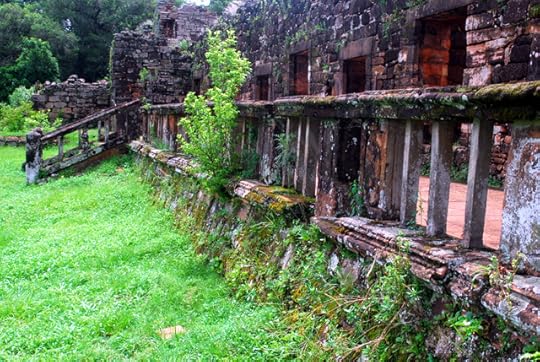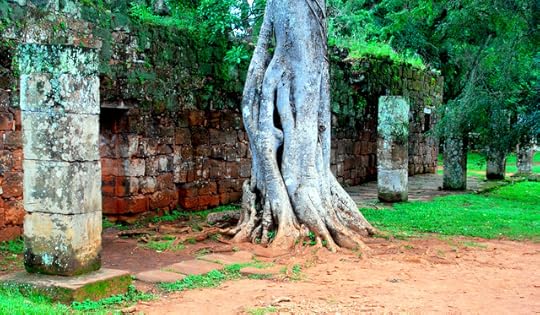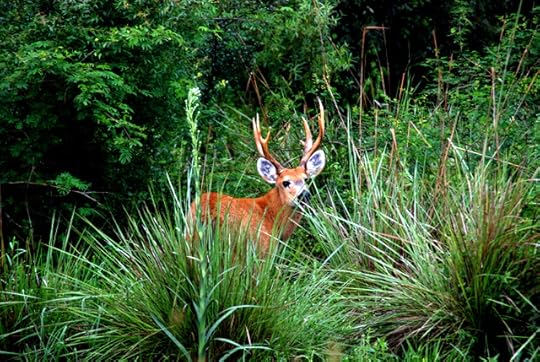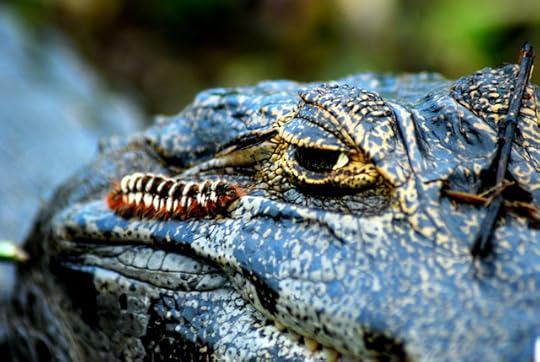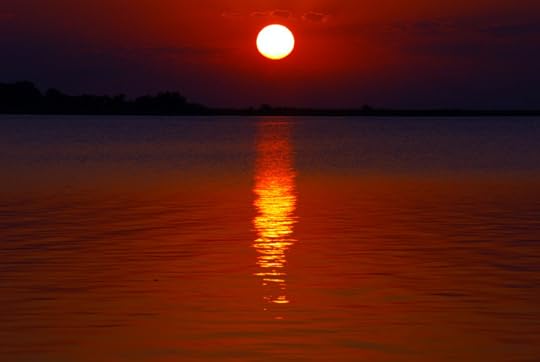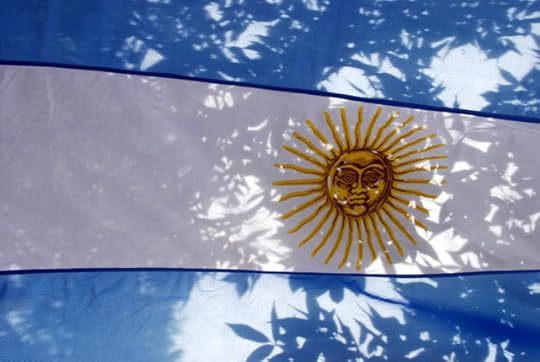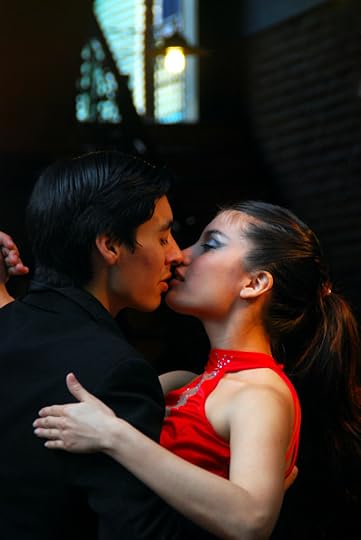Roderick Phillips's Blog, page 25
November 24, 2013
Mission San Ignacio, Argentina, Day 120
A nice, lazy morning, late breakfast then off to visit San Ignacio mini. This is one of the missions on the international circuit that comprise the world heritage listing (4 in Argentina, 2 in Paraguay, and 1 in Brazil). This particular Jesuit mission was founded in 1610 by two Spanish priests, Jose Cataldino and Simon Masceta. The missions were often attacked by Portuguese slave hunters who wanted the indigenous people (the Guarani) for their own plantations. In total 30 missions were created and by 1732 more than 140,000 people (both Jesuits and Guarani) lived there. The Jesuits sought to convert the Guarani to Catholicism while at the same time allowing them to live as much as possible according to their own customs. There were separate living and working areas for Guarani and the Jesuits; the Guarani were largely responsible for providing food for the community. The political leaders of the area were jealous of the success of the missions and eventually persuaded King Carlos III of Spain to expel the Jesuits from all Spanish territories in South America. After 1767 the missions were abandoned and subsequently destroyed by invading Portuguese and Paraguayans. The missions fell into disrepair until the 1940s when restoration work began on San Ignacio mini.
It was great fun to wander around the ruins, some of which are being reclaimed by the jungle again – notably a strangler fig that has almost totally obscured a stone column (see yesterday). We had to break our exploration at one point when the rain came and we dived into the accompanying museum. Quite the tranquil tourist site in a similarly tranquil town. A power outage in San Ignacio generally coupled with the siesta shut everything down till late afternoon. Noticed that my Tevas need yet more running repairs (I’m not very impressed with them). Visit the local sabatero (cobbler): he says my Tevas will be ready tomorrow at 8 am and will cost a measly A$5 (less than US$2) to fix. Despite the power outage we risk the local ice cream, which is absolutely divine in the sauna-like conditions that exist in north-eastern Argentina. Spend the evening on the internet trying to organize future activities in Venezuela, notably a 6-day hike to a Roirama (the largest flat-top mountain in South America), Angel Falls (the highest waterfall in the world), and flights to Colombia. Unfortunately, I make little progress.
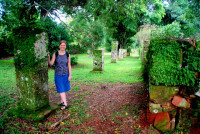
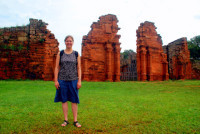
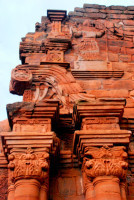
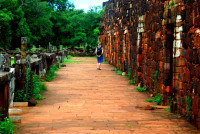
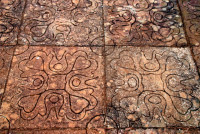
Blog post by Roderick Phillips, author of Weary Heart – a gut-wrenching, heart-wrenching, laugh-wrenching ride
The post Mission San Ignacio, Argentina, Day 120 appeared first on Roderick Phillips.
November 23, 2013
San Ignacio, Argentina, Day 119
I’d like to think the overnight bus ride to San Ignacio will be the last we do in South America. admittedly it does save a night’s accommodation, but the ride is invariably uncomfortable and you can’t see the surrounding countryside or have much in the way of interaction with the locals – arguably the essence of backpacking. This is lost if you’re snoring the night away on a moving bed. As I mentioned yesterday I slept well for once, although the seat I’m given on the San Ignacio bus is disturbingly warm and lived-in. I have to remove the remnants of the last occupant’s dinner before I can settle in. Yuck. Fortunately we are allowed to sleep until 9 am, before the officious conductor shakes Christi and I awake with a breakfast tray. On reflection, I wish we had a ‘Do Not Disturb’ signs like they use in hotels room, though, because the processed snack and sugary drink are not really worth waking up for. (Note the spanish translation for do not disturb is no molestar. That’s right, no molesting me while I’m trying to sleep – that’s a little bit funny, isn’t it?).
We reach San Ignacio by mid-morning. Or I should say we get as close as the bus driver deems acceptable. Perhaps he’s trying to make up for lost time, but it’s noticeable that only Christi and I alight at this impromptu stop on the main road, some half a mile east of the town itself. The bus speeds off in a cloud of dust, leaving Christi and I to hoist our packs onto our shoulders and stagger through the unbelievable humidity into town.
We are relieved to find a double room with a private bath, air-con, and TV at the centrally located San Ignacio hotel for A$100. It oozes the convenience and luxury we had been expecting in C.C. Pellegrini. San Ignacio is a small, sleepy hamlet, not much visited by foreign tourists. Indeed this whole north-east corridor between Paraguay and Brazil is often skipped as people race, well fly, to Iguazu Falls. We’re taking the slower less traveled route, for once stopping at the Esteros del Ibera and now the mission ruins at San Ignacio. This mission is part of the larger practice of Jesuit colonization and conversion of the local native people that occurred in the 17th and 18th centuries. According to historian Charles Lippy and colleagues this practice could either be thought of as the creation of jungle utopias or a theocratic regime of terror. Either way, the life of the Guarani Indians was changed forever. Excavation and reclamation of the San Ignacio mission did not begin until 1940. Prior to that date, the ruins lay hidden beneath impenetrable jungle – something that Christi and I have seen at other religious sites, notably the Buddhist temple of Ta Prohm in Cambodia.
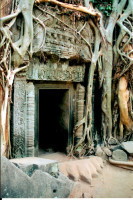
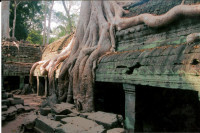

Blog post by Roderick Phillips, author of Weary Heart - a gut-wrenching, heart-wrenching, laugh-wrenching story
The post San Ignacio, Argentina, Day 119 appeared first on Roderick Phillips.
November 22, 2013
4×4 rescue, CC Pellegrini, Day 118
I’m not a happy camper today for several reasons. First our final scheduled activity, horseback riding, has been abandonned due to the ongoing extreme weather conditions. Second I’m enduring an itchy nightmare after last night’s mosquito orgy at my expense, and third the service at the ‘luxury’ Rancho Ibera continues to be lackluster to say the least. For all these reasons I suggest to Christi that we cut short our visit to the Ibera wetlands and return to civilization. Proof yet again that Christi and I are not true backpackers. We really don’t enjoy discomfort and deprivation! Don’t get me wrong the wildlife hereabouts is spectacular and I love photographing it. I just get antsy when the wildlife, in this case the hordes of mosquitoes, fight back.
Unfortunately, escaping C.C. Pellegrini during this severe weather is easier said than done. The regular bus is not running due to the rain and associated flooding, but Graciela (our fixer in Mercedes) is able to organize a 4×4 rescue back to civilization. Power at Rancho Ibera is intermittent at the moment, so we pack quickly when the light pops back on. Although our room was clean when we arrived, no staff has been in to change the linens or clean the bathroom since the first day. We even have to ask for more toilet paper when we run out. Perhaps there’s a reason we are the only people staying here. Our 4×4 rescue transport arrives promptly at 4 pm and we leave the Rancho Ibera without regret.
The road out of town is treacherous, but turns out to be another wildlife safari. Our driver is happy to stop and let me photograph marsh deer and a 1.5 meter yellow anaconda. This and many capybara sightings are fantastic. It continues to rain hard, flooding the road, while lightning and thunder pound our 4-hour ride back to Mercedes.
Graciela takes our disappointment personally and does all she can to help us with our immediate onward travel for we have no desire to spend a cold, wet night in Mercedes any more than we did in CC Pellegrini. Escaping Mercedes aboard public transport is not that easy at night, however, but Graciela finds us two tickets on a bus to the tiny hamlet of Paso de los Libres two hours to the south-east of Mercedes and within spitting distance of the border with Brazil. We arrive at the Paso de los Libres bus station near midnight. You might think the place would be closed and dark, but you would be wrong – this is Argentina after all. We arrive at the same time as two domestic tour buses. And the tourists want their dinner. The servers are run ragged over the next 2-hours until therestaurant closes at 2 am. Supposedly our onward connection departs at 2.20 am, but torrential rain to the south delays its arrival until 3.45 am. This long, weary day finally ends at 4 am when we collapse into our cama seats and fall instantly asleep, leaving the bus to continus its overnight journey north.
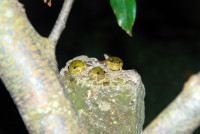
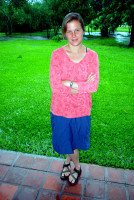


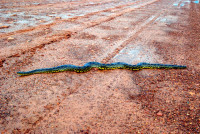
Blog post by Roderick Phillips, author of Weary Heart – a gut-wrenching, heart-wrenching, laugh-wrenching ride
The post 4×4 rescue, CC Pellegrini, Day 118 appeared first on Roderick Phillips.
November 21, 2013
Mosquitoes are evil bastards, Day 117
I hate mosquitoes. I especially hate them as I lie in bed at night and they zoom past my ear taunting me. I have to get up and hunt them down no matter how long it takes. Christi suffers in silence as we both endure a sleepless night. We are awoken just after dawn by a tremendous clap of thunder that shakes the hotel as the rain sweeps in again. The rain clatters the roof so hard it reminds me of horses running on cobblestones. It is so loud there is no chance we will fall back asleep, but there’s nothing to get up for because our morning wildlife viewing is curtailed due to the extreme weather conditions. Supposedly the summer and autumn are the wet times of year (we’re now in the South American spring), but it’s hard to imagine there being more rain than this – it’s VERY WET! We’re forced to relax again. It’s a funny thing that Christi and I have been on the road for 4 months, virtually in constant motion, and now that we have the opportunity to relax, I’m finding it very difficult. Could it be that my adrenaline levels are perpetually elevated, ready for the next unknown challenge. My edginess continues until the monsoon subsides in the afternoon and we can finally embark upon another speedboat ride around the Ibera wetlands. Capybara and caiman remain the most abundant species (and most easily photographed), although there are numerous bird species that pose very nicely for the camera, including the delightfully named Southern Screamer.
Tonight we change things up a little by going out on a night safari. Our guide, Jose, promises a plethora of new and different species to enjoy, including cats, anteaters, and armadillos. What nobody mentions, however, is that we will be dinner for the trillion and one mosquitoes that plague our route through the marshes. Jose brings a powerful spotlight with him, but the only critters we encounter are capybara, caiman, a marsh deer, a vizcacha (a member of the capybara family) and a few frogs that serenade us. Leave the marsh with two fewer pints of blood and not much in the way of exciting new animal encounters. Back at the ‘luxury’ Rancho Ibera, Christi is shocked to see the extent of my mosquito mauling. She escaped with barely an itch to scratch. This is one time where being sweeter meat is not an advantage.

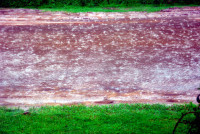

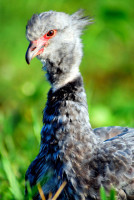

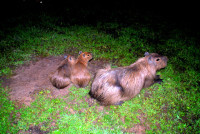


Blog post by Roderick Phillips, author of Weary Heart – a gut-wrenching, heart-wrenching, laugh-wrenching story
The post Mosquitoes are evil bastards, Day 117 appeared first on Roderick Phillips.
November 20, 2013
Esteros del Ibera, Day 116
After a lazy breakfast we amble down the country lanes of C.C. Pellegrini to the boat dock where our guide, Jorje, then zooms us off across the Esteros del Ibera in a speed-boat, the wind in our hair. Wetlands are by their very nature a magnet for evil, nasty, biting bugs, but the good news is the bastards can’t keep up with the speed boat - yippee! It is also cooler today, so my camera does not fog every few minutes. As Jorje approaches a likely spot he cuts the engine and we glide along in relative silence (although between you and me, I have sneaking suspicion the wildlife still realizes there are humans about).
Our wildlife spotting is spectacular, on a par with Noel Kempff Mercado NP in Bolivia. According to Jorje adult capybara and adult caiman have no predators (human or animal) and more often than not they do not budge as the speedboat approaches. Indeed, caiman are basking in the sun and oblivious to our approach – we could reach out of the boat and touch them. On one occasion a colorful caterpillar strolls around the head of the caiman, and the caiman barely blinks and we watched spell-bound from about two-feet away. Next up is a rufous heron who poses perfectly for us, while we snap away like mad things. The capybara are equally docile and I get close-up photos under every condition I can think of. A fantastic morning’s wildlife viewing ends with some more distant views of marsh-deer. Nothing much happens in the afternoon, which is when I suppose we are supposed to be relaxing. But to be honest I’d rather be out and about photographing the wildlife. I pace Rancho Ibera like a caged animal desperate to be free.
At 4 pm, under dark, cloudy skies, we finally leave our hotel on a nature walk. We watch an interesting documentary about the ecology of the Esteros del Ibera at the visitor center, which is located at the entrance to town and then explore a nearby nature trail. Sod’s law the skies open as soon as we leave the visitor center and Christi and I stumble along the slick trail during the downpour. We are attacked relentlessly by vicious mosquitoes of biblical proportions. On the plus side we do see a family of howler monkeys, although the poor light makes photography difficult.
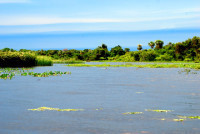

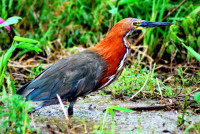

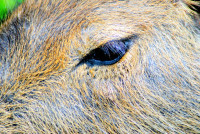
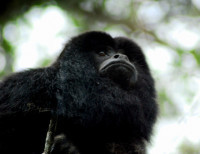
Blog post by Roderick Phillips, author of Weary Heart, a gut-wrenching, heart-wrenching, laugh-wrenching tale
The post Esteros del Ibera, Day 116 appeared first on Roderick Phillips.
Colonia Carlos Pellegrini, Argentina, Day 115
Colonia Carlos Pellegrini does not have an ATM so we stock up on cash before our 3-hour bus ride. We also pay Graciela A$2230 for the bus to Pellegrini plus 4 nights accommodation at the Rancho Ibera with full board and 4 activities (a 2-hr boat ride; a 3-hr boat ride; a night-time walking tour; and a horse-back excursion). This works out to be US$150 per day for 3 nights and US$50 for the last night (where there will be no activities), but we are promised relaxation and a little bit of luxury. And Christi and I do so enjoy our brief moments of luxury.
First, though, we have to get to Colonia Carlos Pellegrini and we are promised rough roads – roads that can become impassable during severe weather. The windows on the lime green bus are caked with red dirt so we really can’t see where we’re going – hopefully the bus driver has better luck. The good news is that there are no animals begin transported, although there are plenty of groceries for the locals in CC Pellegrini. The bus rocks from one pot-hole to another kicking up even more red dirt as we make slow, uncomfortable progress. The engine strains and struggles over the terrain; the noise is unbelievable. I’m more than a little relieved to finally reach our destination.
Colonia Carlos Pellegrini resembles a collection of mud huts, with gooey, muddy, red unpaved roads. It definitely feels undiscovered. Cows, horses and chickens wander the roads, eating the lush abundant grass. Rancho Ibera, our ‘luxury’ accommodation is however a disappointment. Theplace has definitely seen better days – both in terms of the staff (who are not particularly friendly) and the accommodation (our bed is ancient, but there is air conditioning – indeed the air-conditioner almost fills the room. It’s loud, but effective). The ranch does have cable TV with some English language programs. We watch for a while as a sudden rain storm pounds the roof of the house, floods the garden, and turns the main road to tomato soup. It’s VERY wet.
After an admitedly pleasant lunch, the sun returns enticing Christi and I out to explore the town. But it’s like walking inside a sauna. My camera lens becomes fogged with condensation every minute or two making photography a big problem while Christi and I are dripping sweat. The town is a series of dirt roads and grassy intersections where road maintenance consists of letting the cows and horses munch on the juicy stalks to keep it from growing out of control. Within 30 minutes we struggle back to Rancho Ibera and collapse blissfully into a couch all the while blasted by air-conditioning. Now that is luxury. As the heat finally begins to dissipate we walk down to Laguna Ibera to watch the sunset. It is beyond spectacular. Possibly the best I have ever seen.
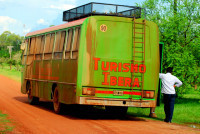
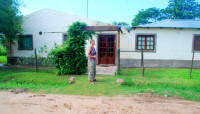

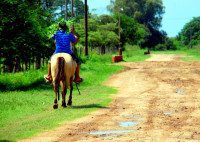
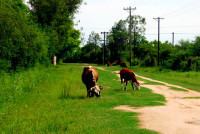
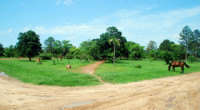
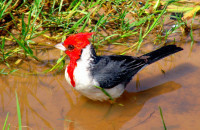

Blog post by Roderick Phillips, author of Weary Heart – a gut-wrenching, heart-wrenching, laugh-wrenching tale
The post Colonia Carlos Pellegrini, Argentina, Day 115 appeared first on Roderick Phillips.
Buenos Aires to Mercedes, Day 114
Up at 5 am, shower, pack and catch a taxi to Retiro bus station. Neither Christi nor I are sad to leave the Garden House Hostel. It’s only saving grace is that it’s cheap. The staff are useless. Buenos Aires is another matter, though. The culture, the people, and the architecture are all fabulous. There is definitely more to see in Buenos Aires and Argentina generally. Perhaps we’ll come back one day.
Mercedes in the far north-east of Argentina is not a common destination for backpackers. Most fly from Buenoa Aires directly to Iguacu Falls, but Christi and I dare to be different. Mercedes is the gateway to a gem of a wildlife area called the Esteros del Ibera (Ibera wetlands). These wetlands are the Argentine equivalent of Brazil’s more famous and more visited Pantanal. From a logistical perspective, it is cheaper and easier for us to visit Laguna Ibera than the Pantanal. I only hope our Lonely Planet guide is accurate in its positive reviews.
The 10-hour bus ride from Buenos Aires to Mercedes is smooth and relaxing. There’s time to think, take a nap, edit the archos, watch some cheesy movies (in English), and watch the green pampas seemingly float by. In fact, Christi and I could have easily stayed aboard longer because when we alight it’s back to the chores of finding accommodation, finding food, and planning onward transportation. This time, though, a guardian angel (or fixer) named Graciela scoops us off the arrival platform and deluges us with information. She quickly seduces us with promises to organize every aspect of our onward travel to Colonia Carlos Pellegrini (the hamlet lying on the shores of Laguna Ibera) and our exploration of the wetlands themselves. In return we agree to stay at her hostel – slightly over-priced at A$120 (with private bathroom), but we’re really paying for her services as a fixer. Fingers crossed it all pans out.
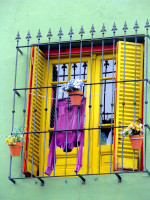
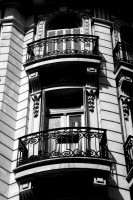
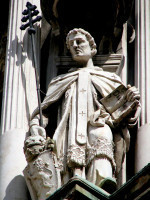

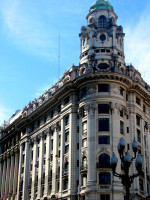
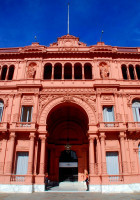
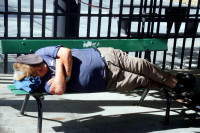
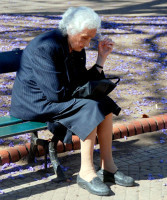
Blog post by Roderick Phillips, author of Weary Heart – a gut-wrenching, heart-wrenching, laugh-wrenching ride
The post Buenos Aires to Mercedes, Day 114 appeared first on Roderick Phillips.
November 17, 2013
La Boca, Buenos Aires, Day 113
It’s our last full day in Buenos Aires and ironically this will be the day we finally do the city tour. Before we do that, however, there are more chores to complete, including organizing accommodation for some of our upcoming destinations (Rio will be disgustingly expensive), batteries for the UV probe (I haven’t mentioned the probe in a while, but we’re still using it to nuke our drinking water – and we’re still healthy!) and retrieving Christi’s passport from the Brazilian consulate (it’s a disappointingly utilitarian, inelegant visa).
Paula is our guide on this whistle stop tour of the capital. She belts out facts and figures in both Spanish and English without pause. We check off the barrios with frightening speed: Retiro, Palermo, and Recoleta, before finally stopping for 20 minutes at…Plaza de Mayo (we can’t seem to escape this place). Back on the bus we head south towards San Telmo and La Boca, the oldest barrios in Buenos Aires. Prior to the 1870s, Buenos Aires’ elite citizens lived in these neighborhoods, but then came the cholera epidemic and those that could leave (i.e. the rich) moved to Recoleta and Palermo. La Boca is now the poor end of town full of shantytowns. It’s a popular neighborhood to visit among tourists, however, but Paula urges us not to wander too far away as danger awaits the careless traveller. Our first stop is the famous Boca Juniors soccer stadium, La Bombonera. It’s the heartbeat of the city, home team of Diego Maradona, and the most popular team in Argentina. Sadly, there’s no time for stadium tour, so we content ourselves with photographing the street life and wondering whether or not we are in a safe part of the barrio!
It’s only two minutes by bus to the downtown area of La Boca, but is considered far too dangerous to walk. All the fun is centered around Caminito St. Apparently the eclectic painting of the corrugated metal sidings on peoples houses harks back to the 1880s. After sprucing up the ships and barges that carried Argentine beef around the world, it was the practice of the stevadores to use the rest on their houses – and the practice continues today. I spot a playground full of kids playing football and wonder whether Maradona ever played there as a child. I also finally get the chance to watch and photograph some rather hot tango dancers.
At the end of the tour Christi once again calls her mother who sounds much better today, although it remains unclear whether she requires an operation. We end our stay in this captivating city at Café Tortini. It’s stylish, elegant venue and the food (turkey pie plus hot apple pie and ice cream) is right out of mum’s kitchen. It’s de-licious, as Christi would say.
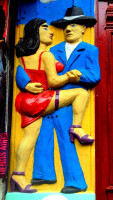
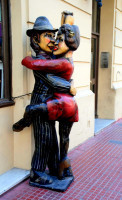


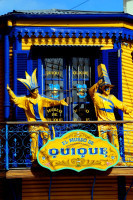
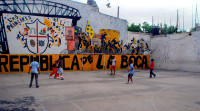
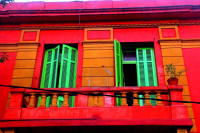
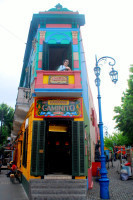
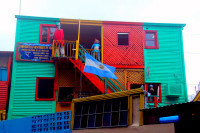
Blog post by Roderick Phillips, author of Weary Heart – a gut-wrenching, heart wrenching, laugh-wrenching story
The post La Boca, Buenos Aires, Day 113 appeared first on Roderick Phillips.
November 16, 2013
Plaza de Mayo – or home, Day 112
We planned a busy day of sightseeing today beginning at Plaza de Mayo, but this was de-railed almost immediately. The staff at our useless hotel who said they could organize onward bus travel now insist that we have to purchase tickets directly from the central bus station, which is a 20-minute subway ride to the north in the Retiro neighboorhood. There are literally hundreds of kiosks in the bus station. We have little choice but to inflict our miserable Spanish upon the staff at the nearest kiosk and hope they can help us. The assistant shakes his head and ominously points deeper into the gloom. On our third attempt (at kiosk number 140) we finally find a company that services the town of Mercedes in the far north-east of Argentina. Semi-cama seats on Nuevo Expreso bus depart daily at 6:30 am. It’s a 10-hour ride, but at least it isn’t overnight. We leave Buenos Aires in two days.
We subway back to Plaza de Mayo to begin our tourist activities for the day when disaster strikes. The subway carriage is so full that my arms are literally pinned to my side, while my pack sits invitingly on my back (there is no time to switch my pack to my front, which is probably the simplest of all safe travel tips). I never stood a chance. In the two minutes it takes to reach the next stop, my pack is rifled through. Gone are my Killer Loop sunglasses, my reading glasses, and over US$300 in cash. Happily, my passport and debit cards are still there. If I’d lost my passport, the nearest processing center for British nationals is Washington DC with a minimum 2-week turn around time!
Fortunately, our ever-handy LP guide even lists police stations, so off we trudge to the nearest tourist police office, where the duty officer, sub-inspector Figueroa, proceeds to informs us that they only provide information to tourists. To report a crime we need a real police station, although the inspector is confident the staff there will not speak English. Gee thanks. The Central Police Station is nearby and we wait patiently (the police in Buenos Aires are not noted for their speed) to make a report. Sub-inspector Figueroa is correct, the duty officer does not understand us, beyond the words robado (robbed) and ladron (thief). Using sign language he says he will call someone to help. Ninety frustrating minutes later…bloody sub-inspector Figueroa arrives to take our statement. What ??? It takes another 45 minutes to complete the report: 6 sheets for the police and half a page for me (…in Spanish). Goodness knows whether my insurance company will accept this. What a frustrating morning.
We attempt to be tourists again after lunch and begin in Plaza de Mayo, which is the site of the May 25th 1810 revolution that ultimately led to independence from Spain. Many famous buildings border the plaza, including city hall, the Metropolitan cathedral and the Casa Rosada (the Pink – Presidential – Palace). There are always lots of people hanging out here and with the Jacaranda in full bloom it’s a great place to while away an afternoon. Next we wander down the pedestrianized Avenue Florida to the Pacific Galleria mall. It’s as if we’ve suddenly been transported back to southern California. Everything is very familiar, albeit in Spanish, including the Christmas decorations (despite the fact it’s only mid-November). We also find a book store and well-hidden behind several displays are a few novels in English. Christi is ecstatic and feeling rather festive so she calls home from an internet cafe and phone center. The news is not good, however. Christi’s mother has broken her shoulder in two places and may need surgery. Christi is very upset and we seriously discuss returning to Los Angeles, but Christi’s Mum insists we keep traveling.
All in all not a good day.

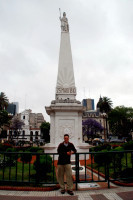
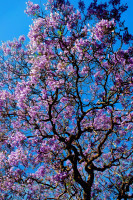
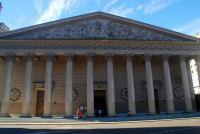


Blog post by Roderick Phillips, author of Weary Heart – a gut-wrenching, heart-wrenching, laugh wrenching tale
The post Plaza de Mayo – or home, Day 112 appeared first on Roderick Phillips.
November 15, 2013
La Recoleta cemetery, Buenos Aires, Day 111
Our main tourist activity for the day is a visit to La Recoleta cemetery – death as an art form. Before the fun, though, we have the chores. And today is a big one: applying for Christi’s visa so she enter Brazil. The Brazilian consulate is a few blocks north of Plaza San Martin. It’s a tatty, busy place on the fifth floor of a nondescript building. Fortunately, the consular official takes a shine to Christi (having refused the American ahead of Christi a visa), saying her visa would be ready in two days. Oh and by the way don’t forget the visa fee: US$130.
The name La Recoleta not only refers to the cemetery, but also to an exclusive neighborhood frequented by Old Money. Under Christi’s expert directions we walk to the cemetery’s main entrance, but before we indulge in some grave snooping we are hungry for lunch. Many tourist restaurants lie in wait for innocent victims and seem disappointed when we shun their expensive, bland fare in favor of something cheaper: 2 large hot dogs with fancy trimmings and 2 sodas for US$5 – a real bargain.
Opened in 1882, La Recoleta was the first public cemetery in the city of Buenos Aries. It covers an area of 55,000 square meters and contains some 4,800 vaults. And these vaults include huge mausoleums with elaborate sculptures and stained-glass windows that have steps down to catacomb-like subterranean chambers to simple plots with simple headstones. Unlike the cemetery in Punta Arenas, La Recoleta does not have topiary cypresses or street signs and it actually appears smaller than the Punta Arenas version. And since La Recoleta is in the middle of the capital city, it is surrounded by buildings inhabited by the living. Personally, I wouldn’t want my bedroom view to be a mausoleum but weird Christi said she wouldn’t mind.
Although La Recoleta is a public cemetery the list of people interred here is a who’s who of recent Argentine history, featuring a host of military and political figures. The most famous incumbent though is Maria Eva Duarte de Peron (aka Evita). Born into a humble family in the provincial town of Junin around 1919 she moved to BA in the mid 1930s to become an actress. Ten years later she met and married Juan Peron – a military general and also head of the Department of Labor. A year after their marriage in 1945, Juan Peron became President of Argentina. He was head of state until a military coup forced him into exile in 1955. By this point Evita was already dead. She passed away tragically young (a victim of cancer) on July 26th 1952 aged just 33. She was the Princess Diana of her age and is regarded with saint-like status in Argentina. However, Evita’s time in power is marked with controversy as well as achievement: jailing opposition leaders while at the same time extending suffrage to women and striving to improve the lives of the poorest members of Argentine society. The plaque that identifies her family ‘Duarte’ mausoleum is mobbed by pilgrims and tourists and bedecked with flowers and notes. Evita was and remains ‘Our Lady of Hope.’
Returning to the world of the living, Christi and I wander down to the waterfront and the newest barrio in town, Puerto Madero. Stop for cake at Il Gatto and eat dinner at TGI Fridays – we just couldn’t resist the lure of US chain food!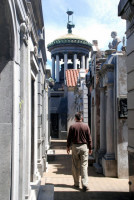

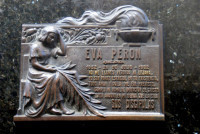
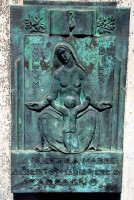
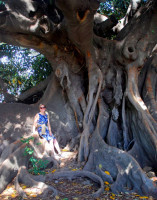
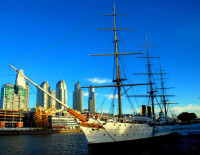
Blog post by Roderick Phillips, author of Weary Heart – a gut-wrenching, heart-wrenching, laugh-wrenching ride
The post La Recoleta cemetery, Buenos Aires, Day 111 appeared first on Roderick Phillips.

